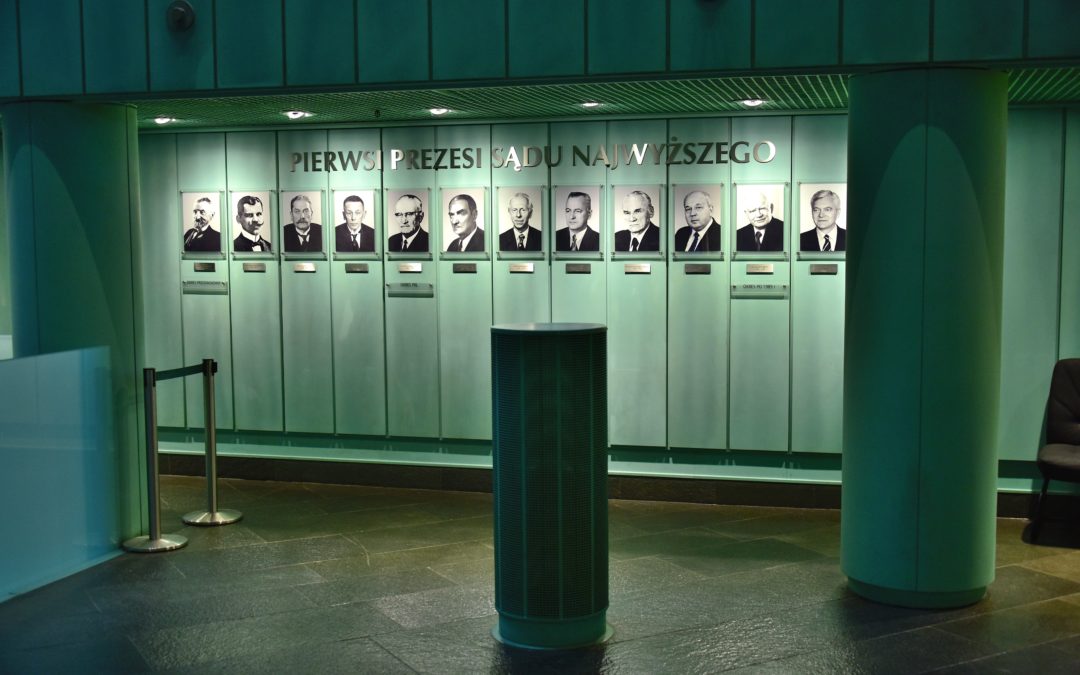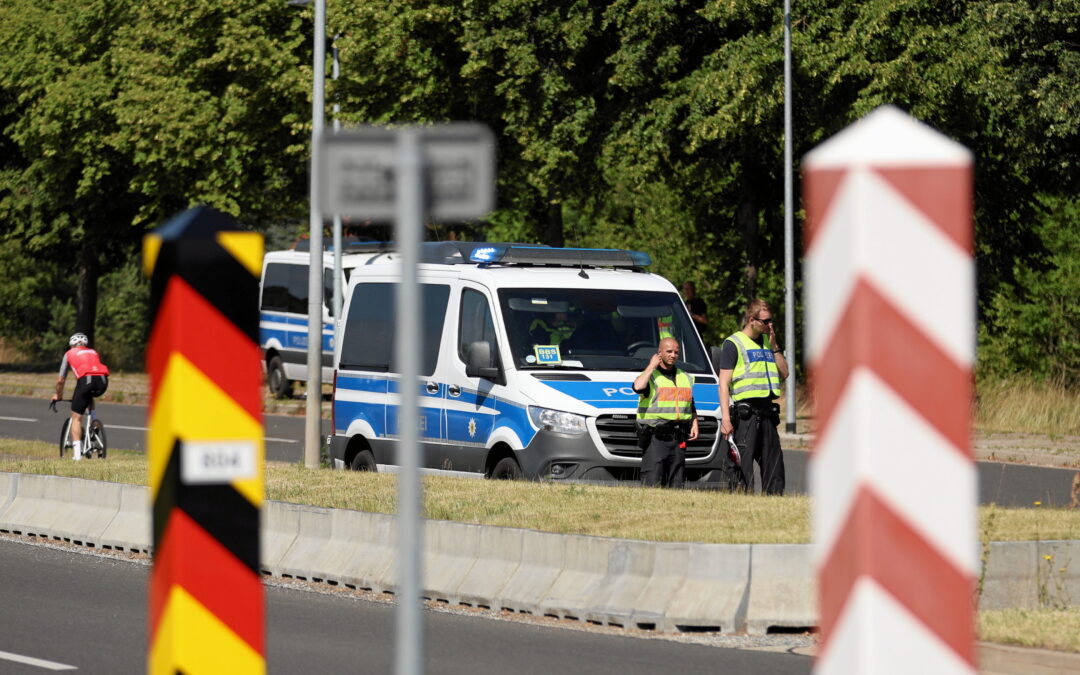By Anna Wójcik
Poland’s Supreme Court, which has long been at the heart of the struggle for control over the judiciary, has this month been embroiled in particular turmoil, following the end of the term of its previous first president, Małgorzata Gersdorf.
The judges of the court are now required to select five candidates, from whom the president of Poland, Andrzej Duda, will choose the next first president. Duda appointed an interim first president, Kamil Zaradkiewicz, to oversee the process after Gersdorf’s departure.
However, that process has become embroiled in chaos and conflict, in particular between the court’s “new” judges – those appointed since 2018 following the government’s judicial overhaul – and the “old” ones from before.
This is due to the manner of appointment of the new judges, who were nominated by a National Council of the Judiciary (KRS) that the Supreme Court itself ruled in December 2019 “is not an impartial and independent body” following the government’s politicisation of the selection of its members and the functioning of the institution.
Pursuant to that ruling, the Supreme Court issued a further resolution in January declaring that all judges nominated by the KRS after its reformation in 2018, including those appointed to the Supreme Court, are illegitimate. Such judges should, therefore, no longer be permitted to adjudicate.
On 8, 9 and 12 May, three sessions of the general assembly of judges of the Supreme Court took place, chaired ineptly by Zaradkiewicz. Out of the court’s 99 judges, 97 took part in the assembly sessions: 55 of them from the “old” court and 42 of them “new”. To date, they have only managed to shortlist 10 judges as candidates to be the new first president, from whom the final five are supposed to be chosen.
Unable to make sufficient progress, and faced with accusations of breaching the rules of chairing the assembly, Zaradkiewicz abruptly resigned on 14 May, claiming to have been “bullied” by other judges and “prevented from fulfilling the tasks” entrusted to him.
In response, Duda named Aleksander Stępkowski as the new acting first president of the court, tasking him with chairing the assembly. Stępkowski scheduled the assembly to resume on Friday this week. In an interview for Dziennik Gazeta Prawa, he said he was confident that the five candidates could be chosen in three hours.
For several months, rumours have been circulating in Warsaw that Małgorzata Manowska, a judge of the civil chamber in the Supreme Court and close collaborator of the powerful justice minister, Zbigniew Ziobro, is destined to become the next first president.
Preparing the ground for a loyal chief justice
The ruling Law and Justice (PiS) party has been carefully preparing the ground for choosing a loyal first president of the Supreme Court for a long time.
One way of doing this has been to increase the proportion of judges appointed by Duda on the recommendation of the neo-KRS, thereby making it easier to elect a friendly first president.
The number of judges in the Supreme Court is not fixed in the constitution. The Act on the Supreme Court – enacted by PiS in 2017 and amended several times since – envisages that the president of Poland decides on the number of seats in the Supreme Court, with a proviso that there should be “at least 120 seats”, an increase from the 95 seats that existed in 2015 to 2018.
Indeed, in the rules of procedure of the Supreme Court, announced in 2018 by way of a presidential ordinance, exactly 120 seats are envisaged in the five chambers. Duda has not stopped – even during the COVID-19 public health emergency – confirming new judges to the Supreme Court to fill those seats. On 6 May, just before the planned assembly, Duda swore in six new judges, who then took part in the general assembly.
Another critical strategic change in the process of selecting a new first president of the Supreme Court – introduced in the Act on the Supreme Court of 8 December 2017 – was to increase the number of candidates chosen by the general assembly from two to five.
The lower number had ensured that each candidate was backed by a high proportion of judges. Increasing it makes it easier for a candidate to be nominated even if they are supported by a relatively small number of judges. That candidate can then be chosen as the new first president by Duda from the five nominees.
PiS also ensured that the general assembly would choose the five candidates even if the “old” judges boycotted the procedure. Under current rules, a quorum is formed when 84 judges participate in the first vote to elect five candidates; in the second vote, the quorum is 75 judges.
But if the general assembly fails to elect the five candidates in two votes (for example, because there are not enough judges in attendance to form a quorum), in the third vote a quorum can be formed with just 32 judges.
A powerful and symbolic role
The role of the first president of the Supreme Court is important in practical terms and also symbolically. They not only manage the work of the court, but also represent it in the outside world, can issue legal opinions on draft laws, and can put forward motions to the Constitutional Tribunal to verify whether a provisions of law conforms to the constitution.
In recent years, the former first president, Gersdorf, became a symbol of resistance against attacks on judicial independence in Poland by the governing majority. In July 2018, when, according to government legislation, Gersdorf and several other Supreme Court judges were supposed to retire, she refused to do so, arguing that her six-year term was guaranteed by the constitution.
The European Commission then challenged the regulations that lowered the age of retirement for judges and, in June 2019, the Court of Justice of the European Union found that such regulations violated EU law, which forced the Polish government into a partial retreat.
Gersdorf continued her work mostly uninterrupted until the end of her term on 30 April 2020 and remained a vocal critic of PiS-led changes to the justice system in Poland that in her opinion threaten judicial independence, the rule of law, and democracy.
Gersdorf’s choice
It was a custom for the outgoing first president to convene a general assembly tasked with electing candidates for the post before the end of their term. Because of the state of epidemiological threat declared in Poland in March, Gersdorf decided to postpone the assembly, and eventually she did not convene it before the end of her term.
The opposition and some media strongly criticised this decision. But Gersdorf did not change her mind and explained, in a very legalistic way, that there were simply no legal grounds to convene the assembly remotely.
She blamed President Duda for not amending the rules of procedure of the Supreme Court to make a remote assembly possible. She also emphasised that the rules have been changed in a way that allows Duda to pick a candidate supported by only a minority of judges of the Supreme Court.
Immediately after Gersdorf’s term ended, Duda announced Zaradkiewicz as the “acting first president”, de facto a political commissioner tasked with organising the general assembly as soon as possible. Zaradkiewicz’s first decisions were to issue a statement warning judges of the Supreme Court not to comment to the media, and to remove portraits of former first presidents of the court from communist times.
Zaradkiewicz is one of the “new” judges, appointed to the Supreme Court by Duda in 2018. Long before that, Zaradkiewicz had a brilliant career as law professor at the University of Warsaw and the director of the research office of the Constitutional Tribunal.
In legal circles, he was widely considered a protégé of Marek Safjan, now a judge at the CJEU, who supervised his PhD thesis, and of Andrzej Rzepliński, the president of the Constitutional Tribunal in 2010-2016 (and another vocal opponent of PiS’s judicial changes).
But Zaradkiewicz abruptly changed loyalties when PiS intensified attacks on the independence of the Constitutional Tribunal in 2016. He became a trusted ally of the justice minister, Ziobro, who then personally vouched for his fitness to the Supreme Court.
Zaradkiewicz’s controversial style of chairing the general assembly shocked and outraged judges of the “old” Supreme Court. The atmosphere was, to put it mildly, confrontational.
He rejected all their motions (to set a meeting agenda and rules for voting for the candidates; to exclude judges from the disciplinary chamber, which the CJEU has ordered to suspend its activity; to allow media into the assembly), took the floor away from them, and ordered a vote recount when he disliked the results. According to some judges of the “old” Supreme Court, such as Włodzimierz Wróbel, criminal charges should be pressed against Zaradkiewicz.
Zaradkiewicz’s replacement, Stępkowski, is another “new” judge appointed by Duda in 2018. Previously, in 2015-2016, he served as deputy foreign minister in the PiS government.
Stępkowski is a professor of legal and political theory at Warsaw University. He was one of the founders and formerly president of an influential ultra-conservative legal NGO, Ordo Iuris, which is known for advocating extreme penalties for abortion, including imprisonment for women terminating pregnancy.
Main image credit: Adrian Grycuk/Wikimedia Commons (under CC BY-SA 3.0 PL)





















